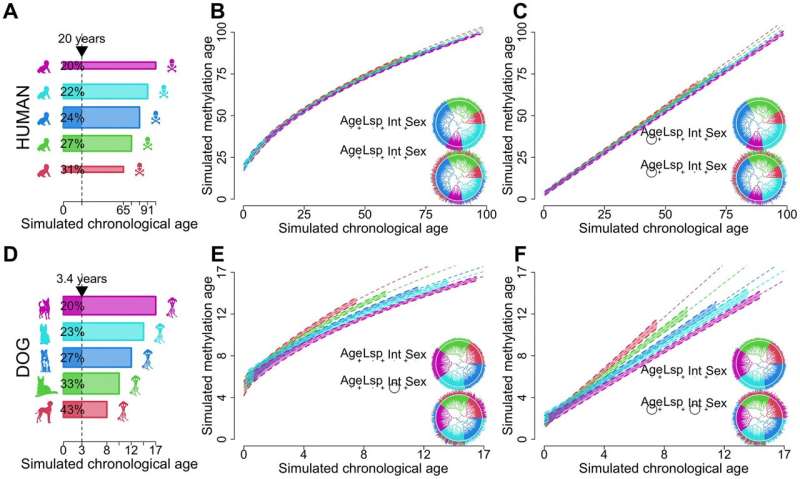This article has been reviewed according to Science X's editorial process and policies. Editors have highlighted the following attributes while ensuring the content's credibility:
fact-checked
proofread
Co-analysis of methylation platforms for signatures of biological aging in the domestic dog

Chronological age reveals the number of years an individual has lived since birth. By contrast, biological age varies between individuals of the same chronological age at a rate reflective of physiological decline.
Differing rates of physiological decline are related to longevity and result from genetics, environment, behavior, and disease. The creation of methylation biological age predictors is a long-standing challenge in aging research due to the lack of individual pre-mortem longevity data.
In this new study, researchers Aitor Serres Armero, Reuben M. Buckley, Lajoyce Mboning, Gabriella J. Spatola, Steve Horvath, Matteo Pellegrini, and Elaine A. Ostrander from the National Human Genome Research Institute, the University of California Los Angeles, and Altos Labs ask whether dogs experience changes in their epigenetic age at a rate predicted by breed longevity.
The study is published in the journal Aging.
The researchers say, "The consistent differences in longevity between domestic dog breeds enable the construction of biological age estimators which can, in turn, be contrasted with methylation measurements to elucidate mechanisms of biological aging."
The researchers drew on three flagship methylation studies using distinct measurement platforms and tissues to assess the feasibility of creating biological age methylation clocks in the dog. They expanded epigenetic clock building strategies to accommodate phylogenetic relationships between individuals, thus controlling for the use of breed standard metrics. The team observed that biological age methylation clocks are affected by population stratification and require heavy parameterization to achieve effective predictions.
"Finally, we observe that methylation-related markers reflecting biological age signals are rare and do not colocalize between datasets," they conclude.
More information: Aitor Serres Armero et al, Co-analysis of methylation platforms for signatures of biological aging in the domestic dog reveals previously unexplored confounding factors, Aging (2024). DOI: 10.18632/aging.206012




















